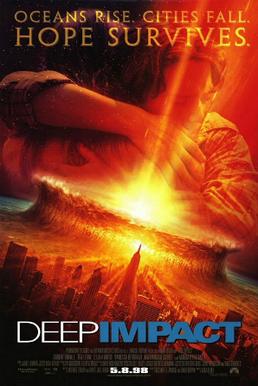I've sort of decided to drop the subject, at least for a while, but I've been carrying around an analogy that I need to unload. I'll link to the reality that I'm allegorizing at the end. Readers who have been following along the past few weeks will perhaps get it immediately.
Obviously, you're not going to leave it at that. You contact the researcher who made the presentation, telling her about the news report and asking whether it's true and, if so, what observation she's basing her prediction on. She doesn't answer your mail, but the reporter soon updates his story. Linking to a set of Power Point slides, he says "more accurate" information has become available: it turns out that it's a 57% chance of impact within a 1000 years.
Okay, that calms you a little. But it still seems pretty hairy, doesn't it? You take a look at the slides and notice that on one of the tables there seems to be an adding mistake. As far as you can tell, the correct values would yield a 32% risk. And, in any case, looking more closely at the probability space, even that 32% seems to apply to a ten-fold longer time scale. Once again, you write to the astronomer, pointing out the error and asking about the timescale. And once again, you don't get an answer.
This time no update is made to the story, but within hours of sending your mail to the researcher, another science journalist, who had also written about the "troubling" asteroid, says she has been contacted by the astronomer and been told it's 32% not 57%, attributing the mistake to an adding error. She says nothing about whether or not it's 100, 1000 or 10,000 years. You now reach out to the twittizen who had sounded the alarm back when it was 75% within a century and ask her how she feels now. "Well, 32% is better," she says, "but it's still really, really dangerous."
Meanwhile, the paper seems to be held up in the review process. You try a number of times to have the astronomer explain her methodology or just send you a draft version of the paper so you can look at it yourself. She never answers your mails. One day, however, you notice that she has altered the slide presentation that the first reporter linked to when he updated the risk to 57%. Without marking the change in any way, she has simply uploaded a new set of slides to the same URL with the adding mistake corrected so it now reads 32%, as though that's what the presentation had said all along, making the article look like it is misrepresenting its source.
Your head (I would hope) is now spinning. Neither the astronomer nor the journalist(s) seem very concerned about what is true or false or how worried the public might be about all this. If you think it's farfetched, read this and this. But here's the kicker: one day you notice that another researcher who had been working on the study (mentioned on the title page of the slide presentation) has testified before congress in support of ... you guessed it! ... funding a "spaceguard" program to protect the earth from "rampant" near-Earth objects that put life as we know it at constant risk.
_________
*This post was reworded slightly on November 1, 2016.

No comments:
Post a Comment